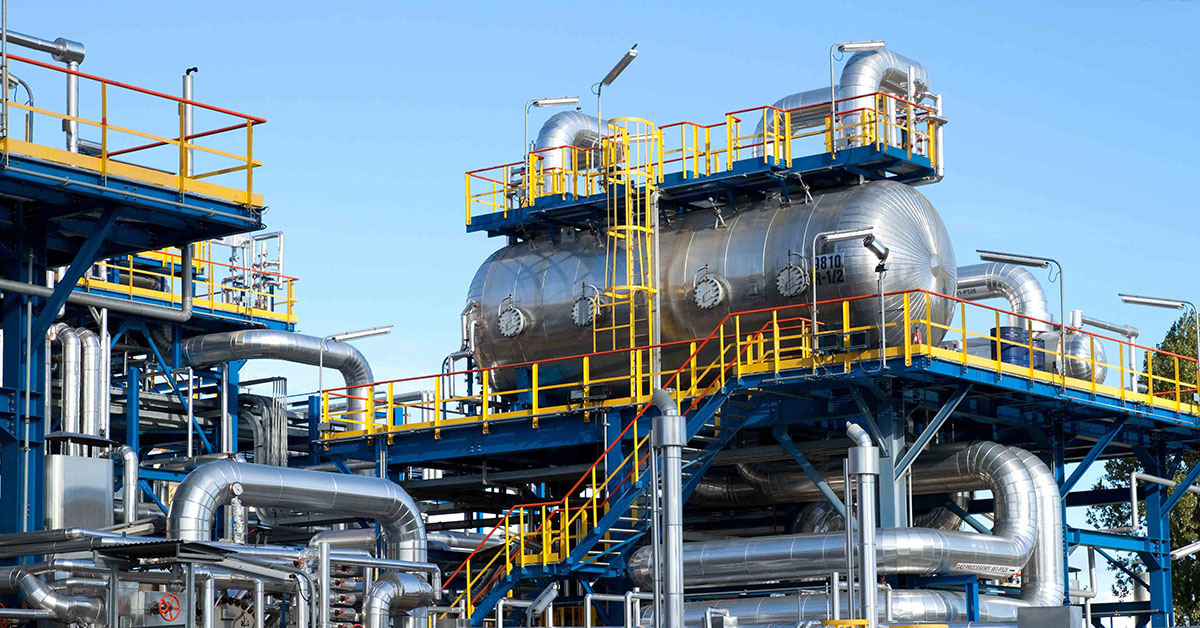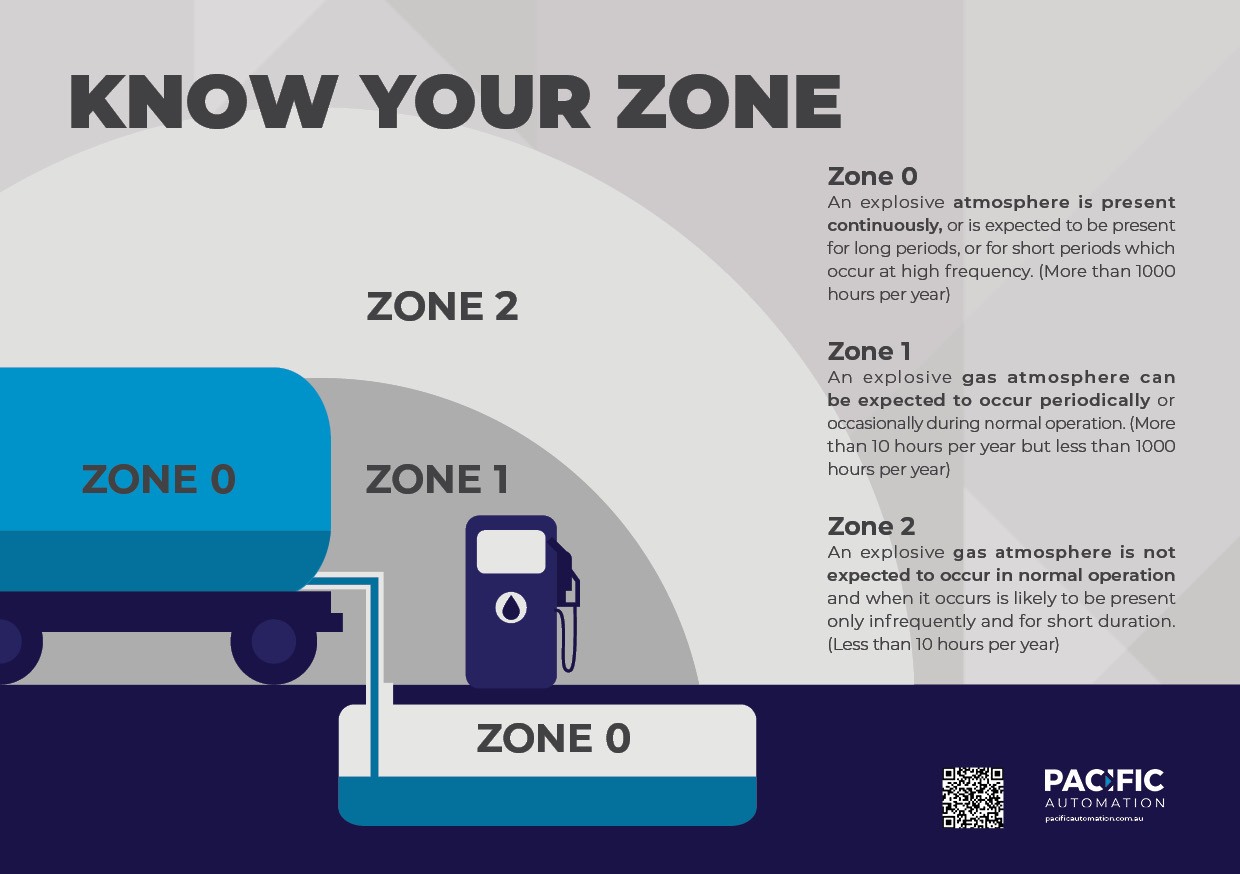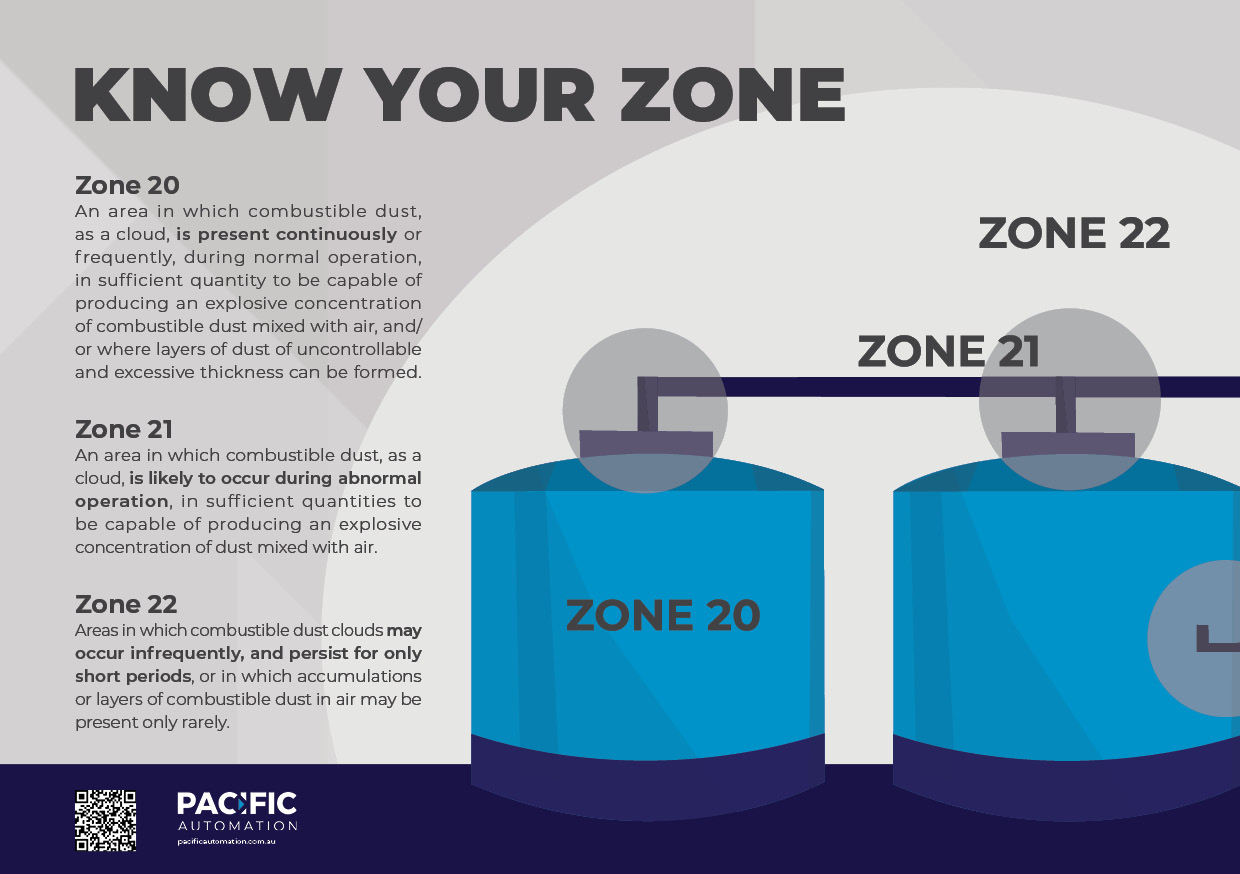Know Your Zone: Hazardous Area Classifications
Published by Pacific Automation on 31st Oct 2021
Any location where there's a risk of explosion can potentially be classified as a hazardous area.

Industrial operators in Australia will frequently encounter hazardous zones across multiple applications and industries.
The oil & gas and mining industries, plus refineries and chemical production facilities, are examples of industries commonly understood as containing hazardous areas. It's simple to understand the link between potential fuel sources and ignition threats.
However, industries that you might not initially suspect can also create risks of explosion.
Explosions occur when a flammable substance meets oxygen and an ignition source. Operations in pharmaceutical processing, grain handling and manufacturing can also create potential risks of explosion.
Tasks and processes performed in the grain handling industry, for example, often involve confined spaces. If not managed correctly, these areas may allow the build up of combustible dusts from flours or other grains.
Confined spaces filled with the correct mixture of combustible dust – a flammable substance – and oxygen require only an ignition source to explode. This can be provided by sparking tools, static electricity, or non-certified electrical equipment.
Hazardous area are classified broadly under two main categories, depending on the source of risk - gas and dust.
Hazardous area zones are then given ratings, according to calculated risk. Zone ratings are applied to specific areas in the workplace. This dictates the level of protection and precaution required. A workplace will typically have multiple zone ratings across operations.
For workers, it's critical to always understand what zone you are working in, so that you can take the required precautions and work safely. For engineers and managers, when specifying equipment for hazardous zones, it must be classified appropriately for use within the area.
The graphics and definitions below provide an indicative example and will not necessarily apply to all applications.
Zone 0
An explosive atmosphere is present continuously, or is expected to be present for long periods, or for short periods which occur at high frequency. (More than 1000 hours per year)
Zone 1
An explosive gas atmosphere can be expected to occur periodically or occasionally during normal operation. (More than 10 hours per year but less than 1000 hours per year)
Zone 2
An explosive gas atmosphere is not expected to occur in normal operation and when it occurs is likely to be present only infrequently and for short duration. (Less than 10 hours per year)

Zone 20
An area in which combustible dust, as a cloud, is present continuously or frequently, during normal operation, in sufficient quantity to be capable of producing an explosive concentration of combustible dust mixed with air, and/or where layers of dust of uncontrollable and excessive thickness can be formed.
Zone 21
An area in which combustible dust, as a cloud, is likely to occur during abnormal operation, in sufficient quantities to be capable of producing an explosive concentration of dust mixed with air.
Zone 22
Areas in which combustible dust clouds may occur infrequently, and persist for only short periods, or in which accumulations or layers of combustible dust in air may be present only rarely.

You've got many options when it comes to working safely around hazardous areas.
Browse through our hazardous area solutions today, or contact our team today to learn more.

Industrial operators in Australia will frequently encounter hazardous zones across multiple applications and industries.
The oil & gas and mining industries, plus refineries and chemical production facilities, are examples of industries commonly understood as containing hazardous areas. It's simple to understand the link between potential fuel sources and ignition threats.
However, industries that you might not initially suspect can also create risks of explosion.
Explosions occur when a flammable substance meets oxygen and an ignition source. Operations in pharmaceutical processing, grain handling and manufacturing can also create potential risks of explosion.
Tasks and processes performed in the grain handling industry, for example, often involve confined spaces. If not managed correctly, these areas may allow the build up of combustible dusts from flours or other grains.
Confined spaces filled with the correct mixture of combustible dust – a flammable substance – and oxygen require only an ignition source to explode. This can be provided by sparking tools, static electricity, or non-certified electrical equipment.
Hazardous Zone Ratings
Hazardous area are classified broadly under two main categories, depending on the source of risk - gas and dust.
Hazardous area zones are then given ratings, according to calculated risk. Zone ratings are applied to specific areas in the workplace. This dictates the level of protection and precaution required. A workplace will typically have multiple zone ratings across operations.
For workers, it's critical to always understand what zone you are working in, so that you can take the required precautions and work safely. For engineers and managers, when specifying equipment for hazardous zones, it must be classified appropriately for use within the area.
The graphics and definitions below provide an indicative example and will not necessarily apply to all applications.
Hazardous Zone Ratings for Gas
Zone 0
An explosive atmosphere is present continuously, or is expected to be present for long periods, or for short periods which occur at high frequency. (More than 1000 hours per year)
Zone 1
An explosive gas atmosphere can be expected to occur periodically or occasionally during normal operation. (More than 10 hours per year but less than 1000 hours per year)
Zone 2
An explosive gas atmosphere is not expected to occur in normal operation and when it occurs is likely to be present only infrequently and for short duration. (Less than 10 hours per year)

Hazardous Zone Ratings for Dust
Zone 20
An area in which combustible dust, as a cloud, is present continuously or frequently, during normal operation, in sufficient quantity to be capable of producing an explosive concentration of combustible dust mixed with air, and/or where layers of dust of uncontrollable and excessive thickness can be formed.
Zone 21
An area in which combustible dust, as a cloud, is likely to occur during abnormal operation, in sufficient quantities to be capable of producing an explosive concentration of dust mixed with air.
Zone 22
Areas in which combustible dust clouds may occur infrequently, and persist for only short periods, or in which accumulations or layers of combustible dust in air may be present only rarely.

Hazardous Area Solutions
You've got many options when it comes to working safely around hazardous areas.
Browse through our hazardous area solutions today, or contact our team today to learn more.